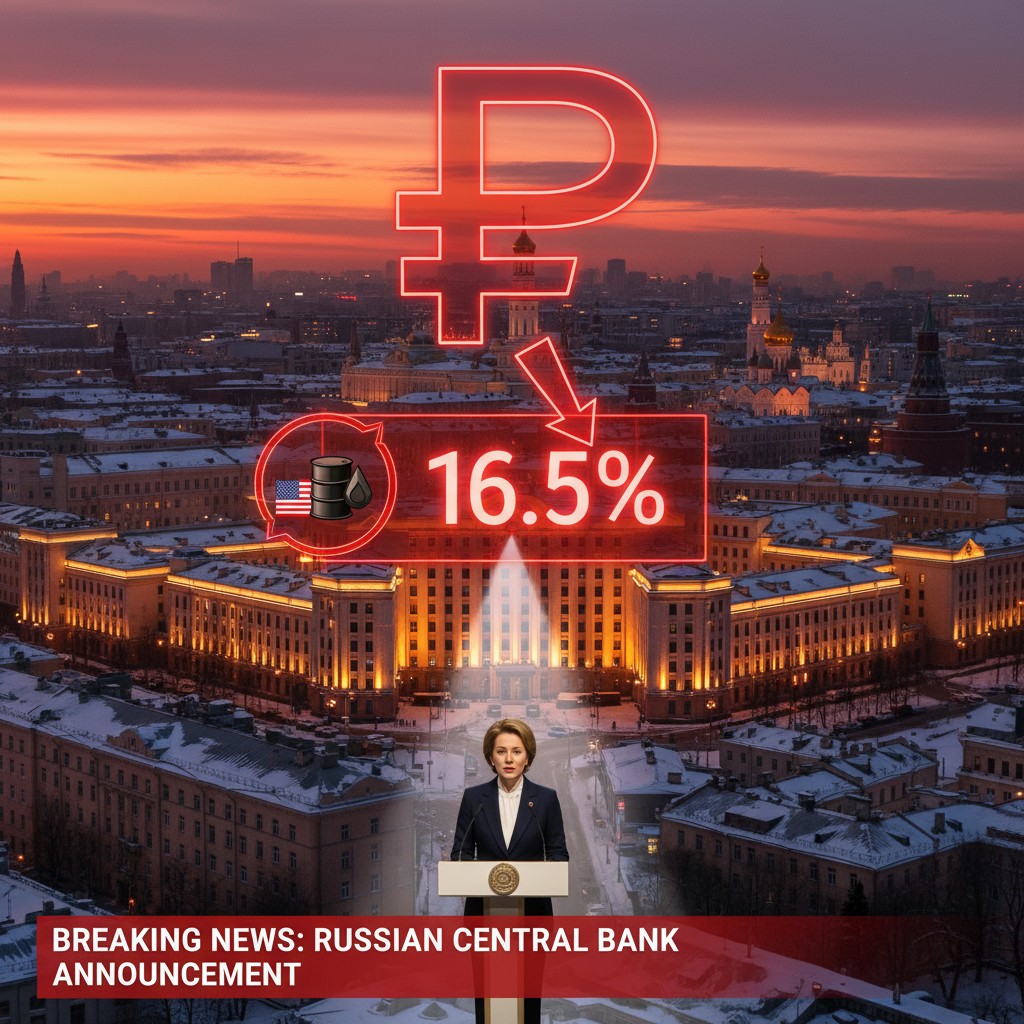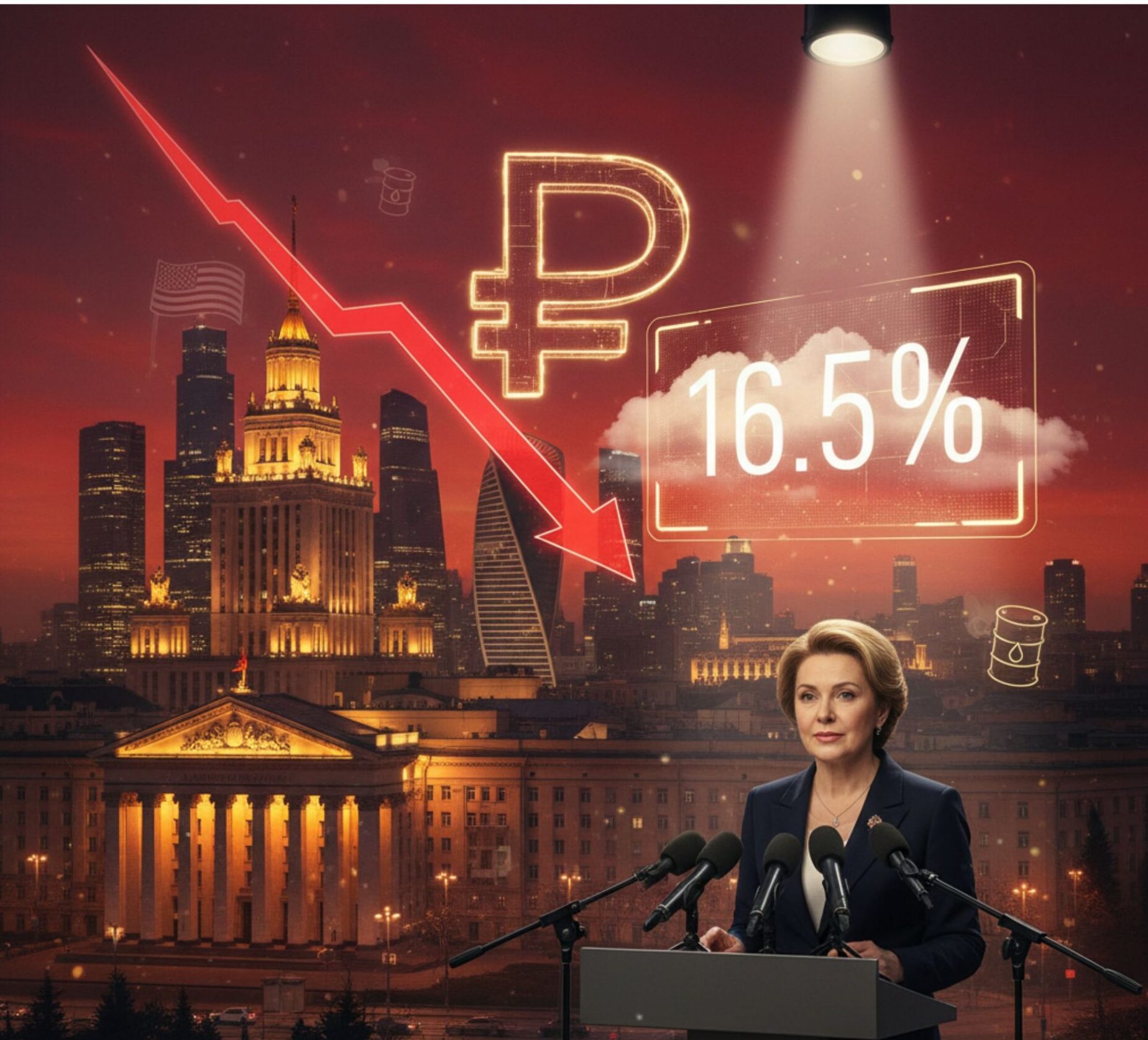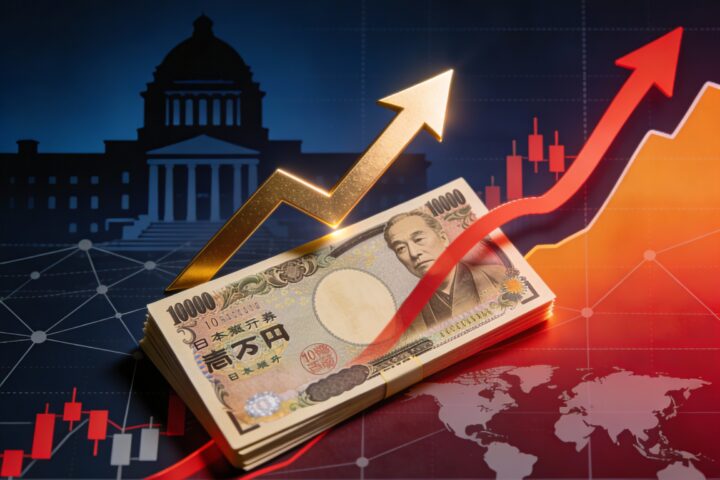October 24, 2025 – Moscow, Russia
The Bank of Russia has slashed its key interest rate to 16.5%, marking the first monetary policy adjustment since new U.S. sanctions on Russian oil firms were imposed earlier this month. The move is designed to balance inflation control in Russia while supporting economic activity amid ongoing fiscal and geopolitical pressures.

Monetary Policy Easing Amid Economic Pressures
Governor Elvira Nabiullina explained that future Russia interest rate decisions will depend on the trajectory of inflation expectations and whether price stability in Russia can be achieved without fueling demand-driven pressures. The central bank confirmed that it would maintain tight monetary conditions until inflation reaches the official 4% target by 2026.
Despite the rate cut, policymakers emphasized that real interest rates in Russia remain restrictive. The bank forecasts rates will average 13–15% through 2026, reflecting a cautious approach to contain inflation while preventing a sharp slowdown in credit activity and growth.
Bank of Russia Inflation Forecast and Economic Outlook
The Bank of Russia inflation forecast for 2025 was revised upward to 6.5–7%, influenced by a proposed VAT hike in 2026 and ongoing supply disruptions from Ukrainian attacks on Russian refineries. Analysts suggest that while inflation risks in Russia persist, the central bank’s decision signals confidence in gradual economic stabilization.
Temporary factors such as rising fuel prices and seasonal food cost increases contributed to the inflation spike. As of October 20, cumulative inflation for 2025 had reached nearly 5%, with gas prices up 11.6% year-to-date.
Geopolitical Factors Driving Monetary Policy
The latest U.S. sanctions on Russian oil companies are expected to slow exports and reduce GDP growth to around 1% in 2025, down from 4.3% in 2024. Governor Nabiullina noted that sanctions targeting raw material exports present challenges but are historically manageable due to Russia’s adaptation mechanisms.
The Russia central bank budget rule remains a key stabilizing tool, absorbing price volatility through reserves in the National Welfare Fund.
Future Outlook and Policy Considerations
While businesses are calling for further rate cuts to stimulate investment, the central bank continues to exercise caution. Nabiullina emphasized that gradual rate easing in Russia is underway, and further reductions will depend on evolving economic conditions.
The Bank of Russia monetary policy remains focused on balancing inflation containment with support for economic activity amid sanctions and fiscal pressures. Analysts predict that monetary decisions over the coming months will continue to adapt to global and domestic economic shifts.
Stay ahead of global financial trends—follow DF Media for daily updates on interest rate decisions, inflation news, and market insights. Don’t miss a beat in today’s fast-moving economy.












